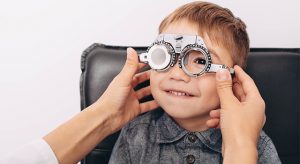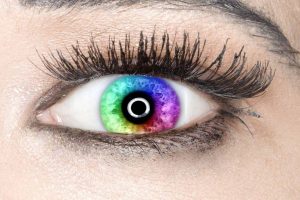Visual evaluations are essential in the treatment of dyslexia.
Children diagnosed with dyslexia could have an visual problem and these children may respond well to visual treatments such as eyeglasses or vision therapy.
Research has indicated that up to 15 percent of the population may be dyslexic, but fewer than one in ten will actually be identified, and will receive a formal diagnosis.
Some people with unidentified dyslexia will overcome early difficulties, but for the majority, learning difficulties will likely persist and have life-long consequences on their occupations and career path.
All children and adults who are reading or learning underachievers require a detailed evaluation of visual function, especially of the binocular vision system— even if a formal diagnosis of dyslexia has been made.
Binocular vision problems such as eye teaming coordination and/or focusing difficulties often occur with, or can be mistaken for dyslexia.
These symptoms can be successfully treated with a customized program of vision therapy. Therefore, a comprehensive binocular eye exam is recommended before diagnosing a patient with dyslexia, or providing other treatments, such as colored lenses.
No two people with dyslexia are alike— each person has individual strengths and weaknesses.
It is important to remember that not all people with dyslexia have the same problems with reading, learning or school work.
Rosen, et al. noted that there can be one or more (up to fifty) affected sites in the brain that cause dyslexia. Each site can affect the brain in different ways, causing multiple, and often confusing, manifestations of dyslexia.
Dyslexia is not outgrown, although most people with dyslexia develop coping strategies (e.g. avoiding reading). People with dyslexia may have a wide range of talents, such as art, drama, math, sports, etc.— yet memory or organization may be challenging for them.
While this article concentrates on the optometric assessment and management of those who have dyslexia, the techniques described are equally valid for people who have not been formally diagnosed with dyslexia — but are underachieving at school or work.
Schedule an appointment with a vision therapy eye doctor who can evaluate your vision and treat your symptoms.
SEE RELATED: Vision Therapy for Special Education: Success Stories
What are the different aspects of vision?
Vision has been defined as a continuous and integrative process that can be divided into three components:
(1) Visual acuity- including refractive status
(2) Visual efficiency– including oculomotor, accommodative and binocular vision skills
(3) Visual perceptual skills– including the ability to recognize and discriminate visual stimuli, and interpret them correctly and appropriately
Vision problems and dyslexia
There is no doubt that vision problems, specifically binocular vision anomalies, can seriously affect reading and learning success. Additionally, undetected vision problems can exacerbate learning problems, or mimic the presence of true dyslexia.
The following visual problems have been shown to adversely affect reading performances:
- Hyperopia
- Convergence insufficiency
- Poor fusional vergence reserves
- Fixation disparity
- Hyperphoria
- Anisometropia
- Accommodative dysfunctions
- Reduced saccadic and pursuits eye movements
- Visual processing anomalies
Symptoms of dyslexia
Some children and adults, who have difficulty with reading, experience visual perceptual distortion and complain of symptoms when viewing a page of text.
These symptoms may include:
- Words or letters appear to move
- Seeing a glare on white paper
- Eyestrain or headaches
- Slow reading
- Reduced attention and concentration
- Comprehension difficulties
- Blurry or double vision
- Fatigue or tiredness when reading
These distortions can be caused by a conventional optometric anomaly such as hyperopic astigmatism, a deficit in the binocular vision system, or reduced visual efficiency.
If you experience any of these symptoms contact an eye doctor near you so that you can alleviate your symptoms.
Meares-Irlen Syndrome
Meares-Irlen Syndrome may be caused by pattern glare, which has been described as an over sensitivity to the line pattern that dark print makes on a white page. This oversensitivity can occur with or without dyslexia—it most likely does not cause dyslexia, but can still hinder educational success. If a child presents with Meares-Irlen Syndrome, colored lenses or paper can enhance their reading or learning abilities.
The importance of a binocular vision evaluation
The two most frequently occurring binocular vision problems are eye control (vergence) and focusing disorders.
The vergence and accommodative mechanisms must be functioning efficiently to facilitate accurate sustained reading and overall success in school performance. These two vision problems can occur together or independently, and are amenable to treatment with lenses or vision therapy eye exercises.
An appropriate treatment plan is based on the patient’s age and specific problem.
Poor binocular vision can result in ocular discomfort, headaches, diplopia, blurred vision and fatigue during reading and other near point tasks.
An examination of visual skills by an optometrist experienced in vision therapy is essential for any child or adult that has been diagnosed with dyslexia or feels they may have this condition.
LEARN MORE: Guide to Vision and Learning Difficulties
If you feel you may have dyslexia, schedule an eye exam with a vision therapy eye doctor for a comprehensive visual evaluation.










